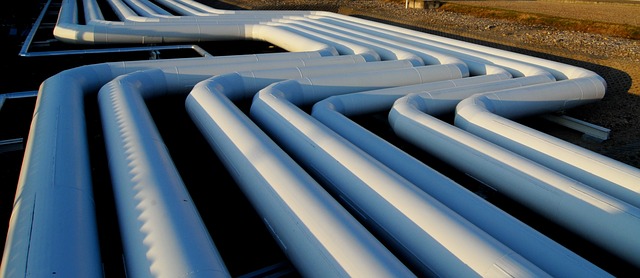The widespread use of plastic pipes in domestic systems of water supply and heating has become possible due to the unique design that combines the positive features of metal and plastic pipes at the same time.
Metal-plastic pipes – whose technical characteristics, despite the popularity of products, are far from familiar to everyone, are distinguished by high anti-corrosion properties, flexibility, and remain at the same time as durable. In this article we will give a more detailed description of the metal-plastic pipes, we describe their structure and features of use.
Table of Contents
The design of metal pipes
The core of the metal-plastic pipe is the inner layer of polyethylene, which gives the pipe strength and performs the supporting function.
By means of adhesive composition, a layer of aluminium foil is attached, which prevents the diffusion of oxygen and stabilizes the pipe.
The edges of the foil are butt-welded together with a laser. Metal-plastic pipes are stabilized by the temperature of their linear expansion, which becomes comparable with the temperature of expansion of metal pipes. At the same time decorating and protective function is carried by an outer plastic layer of white colour.
Due to this unique design, the service life of plastic pipes is very long.
With all this, each structural layer of a metal-plastic pipe has its own separate function. So, the cross-linked polyethylene, constituting the inner layer, provides the inner surface with the necessary smoothness, protecting it from overgrowing and other types of deposits.
Both polymeric layers protect the aluminium core from the formation of electroplating pairs with steel and brass elements of the pipeline, reduce the thermal conductivity of pipes and the intensity of condensate formation on them.
Forms of release of metal plastic pipes
The outer diameters of metal-plastic pipes produced by modern manufacturers range from 16 to 63 mm. The most common are diameters of 16, 20, 26 mm, sometimes in the formation of extensive layout of large houses also use diameters of 32 and 40 mm.
For distributing plumbing in an ordinary apartment is quite suitable plastic pipe – the diameter of which is 16 or 20 mm. For example, the main distribution of pipes can be formed from products of 20 mm in diameter, whereas from pipes of 16 mm it is possible to make bends to the bath, mixers and other household appliances.
Advantages and disadvantages of metal pipes
As already mentioned, the pipes of metal-plastic technical characteristics and positive qualities are absorbed from each of the materials used in their production.
Advantages of metal pipes:
Resistance to silting and overgrowing.
Corrosion resistance and anti-toxicity.
High throughput, which is 1.3 times more than metal pipes of the same diameter.
Resistance to aggressive environments.
Reliability and durability. For example, a steel pipe will last about 15-20 years, but if you take metal-plastic pipes, the pipeline will last for about 50 years.
Low weight and high ductility.
Low thermal conductivity: 175 times less in comparison with steel pipes and 1,300 times less with copper ones.
Easy installation of metal-plastic pipes with their own hands, the minimum amount of waste, a simple list of tools for processing, the ability to pour pipes into concrete without restrictions.
Good sound insulation properties.
Antistatic (non-conductive stray currents).
Excellent maintainability without the need for tube bending and welding equipment.
Aesthetic appearance that does not require painting.
Disadvantages of metal pipes:
With all its advantages, metal-plastic pipes are not without flaws. Metal and plastic have different coefficients of expansion, therefore, constant temperature fluctuations of the fluid in the pipes can lead to a weakening of the joints of metal-plastic pipes, which can cause leakage.
This feature must be taken into account when laying pipes: they should be laid with a certain margin (nottightly). In places of pipe bends it is necessary to provide compensating loops.
In addition, metal-plastic pipe – the characteristics of bending which are also due to the materials used in its manufacture, being rather plastic, is afraid of multiple bends and accepts bending only in certain radii by means of special benders.
Quality of pipes play a direct role in the likelihood of having a blocked drain issue. If you happen to find yourself dealing with a blocked drain, you might need to call a blocked drain plumber.
You can also bend the pipe manually, but before that you need to insert a special spring into it and fill the pipe with sand. Regardless of the bending method, the pitch of the bends on the pipe must not be less than 50 mm. Also, the pipes should not be twisted about their central axis.



















